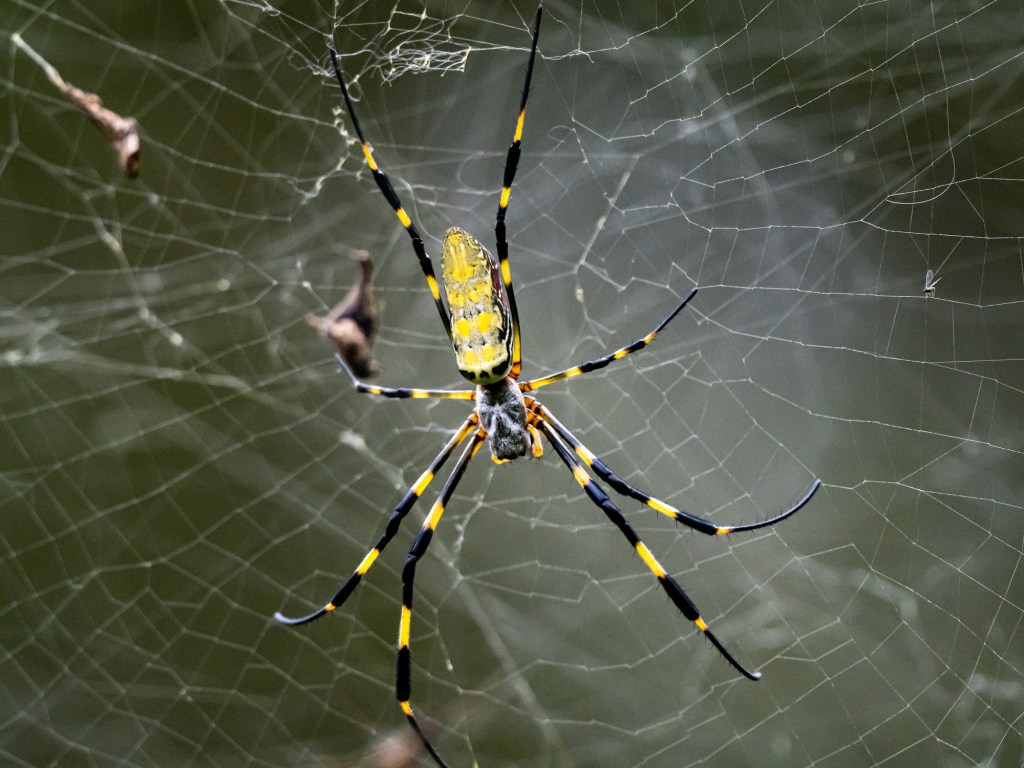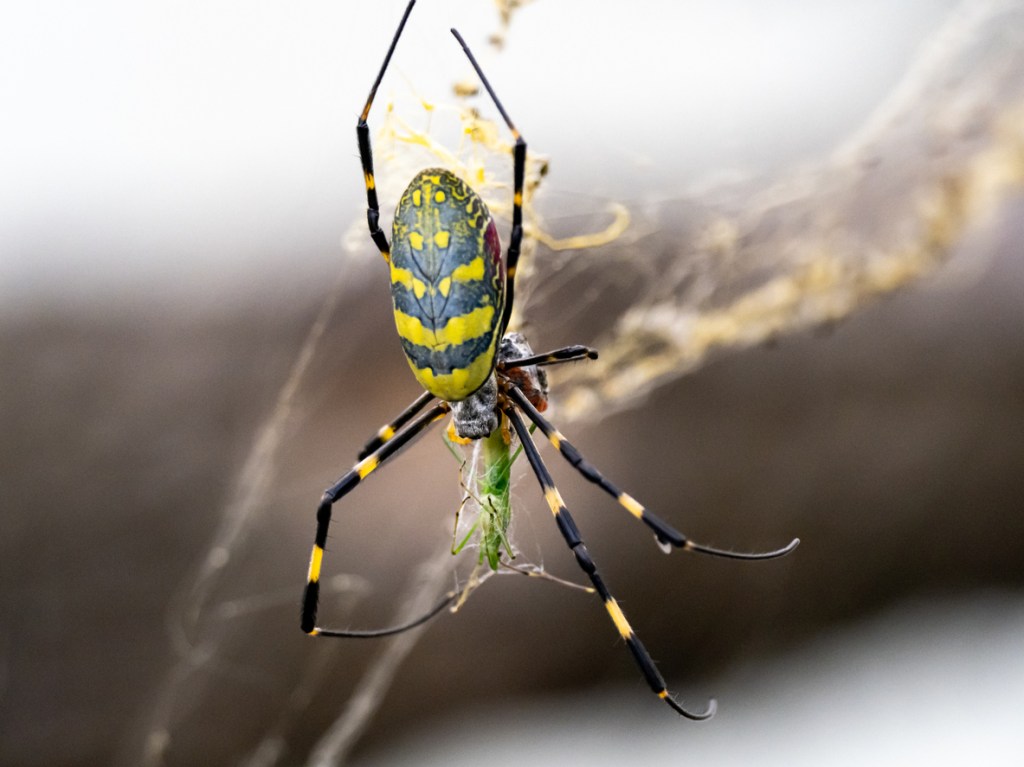
iStockphoto / David Hansche
- A species of large spider that’s native to Japan has been in the Southeastern states for years but expected to overtake the entire East Coast
- A recent study found the spiders are more adept at surviving freezing climates than expected and these huge spiders are on the move
- Read more ‘BroBible Outdoors’ articles here
The palm-sized Joro Spiders are native to Japan but made its way to the United States via shipping containers. So far, these spiders have been largely contained to the Southeastern United States where the warmer climate allows them to proliferate throughout there year. But a new report suggests these spiders could overtake the entire east coast and one scientist says we need to “learn to live with them.”
Joro Spiders are massive by spider standards. They are about the size of the palm of an adult’s hand. These spiders are also striking in appearance with black and yellow-striped legs and striking red markings on their bodies. Suffice it to say they are HARD to miss in the wild.
An article on NPR by Vanessa Romo says Joro Spiders get their names from ‘Jorōgumo’ which was able to turn itself into a beautiful woman and devour unsuspecting men, according to Japanese folklore. As far as spider origin stories go, that’s the best one I’ve heard outside of Spider-Man.
Are Joro Spiders Going To Overtake The East Coast?
The recent study of Joro Spiders looked into how susceptible they are to the cold. What they found is these spiders ” have a metabolism twice as high as their spider-cousin and heart rates 77 percent faster when exposed to low temperatures.” according to that article by Vanessa Romo on NPR‘s website.
This suggests the spiders will soon proliferate in colder climates and it is only a matter of time before they get there. The study explicitly states: “These findings suggest the joro spider can exist in a colder climatic region than the southeastern USA.”
Benjamin Frick is a co-author on the study and explained these spiders are proliferating because they have “No predators, it doesn’t have anything that’s controlling its population size in the new habitat, but it has perfect conditions to spread.”
How exactly are they moving around? People. The scientists behind this study of Joro Spiders spoke with one UGA grad student who had unwittingly transported one of the spiders to Oklahoma. If that’s an expert doing it on accident who knows how many of these spiders are hitching rides on U-Haul trucks, semi-trucks, in the undercarriage of cars, on boats, in luggage, etc.

iStockphoto / David Hansche
Are These Spiders A Threat To People?
There’s good news and bad news. The bad news is if you are scared of spiders then the future could be very stressful for you. And the good news is Joro Spiders don’t present any real threat to humans. Andy Davis is a research scientist at UGA’s Odum School of Ecology and shared this with NPR:
Despite their startling appearance — and their namesake — Davis noted joros don’t appear to be harmful or have much of an effect on local agriculture or ecosystems. In fact, he said, they may be beneficial to native predator birds as an additional food source. And, while they kill their prey using venom, scientists say they are harmless to people and pets because their fangs are usually too small to break human skin.
His advice to everyone on the East Coast that could be inundated with Joro Spiders in the coming years is to “learn to live with them”. Because it’s very possible we are heading towards a future where these spiders are found from Florida to Maine.
As a born-and-raised Floridian, I welcome any and all spiders as long as they aren’t biting me. But this whole ‘fangs are too small to pierce human skin’ sounds eerily reminiscent. It reminds me of when we were all kids and heard Daddy Long Legs are the most venomous spiders on the planet but their teeth were too small to hurt us. That’s a complete urban legend that you can read more about here on Live Science.